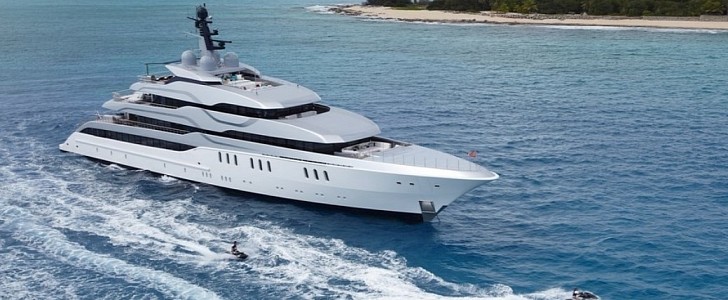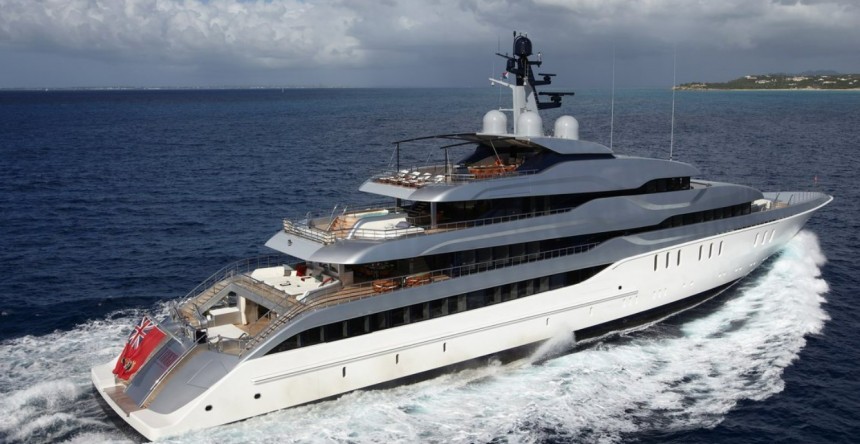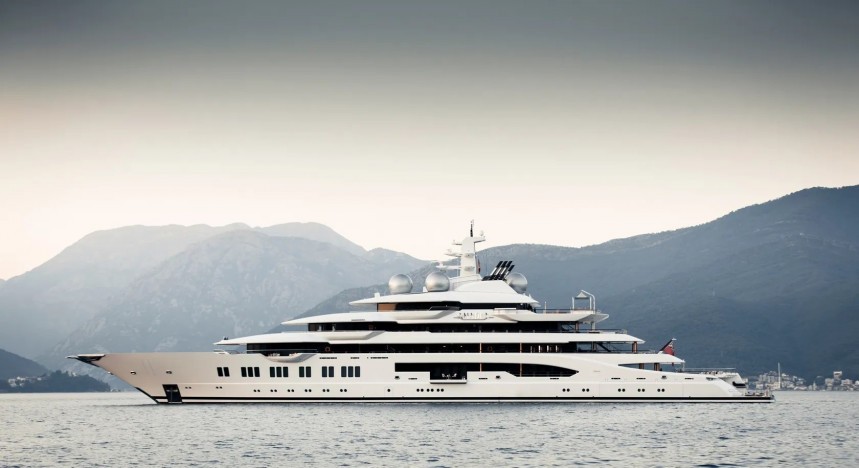News of the first superyacht belonging to a Russian oligarch, seized by international authorities as sanctions went into effect, was met with a sort of “Gotcha!” glee and an obvious sense of relief. The reality of these economic measures is only now sinking in because, as it turns out, maintaining a vessel of this kind is no walk in the park.
Whoever has bought and owned a boat knows that it’s costly and time-consuming business. You have to ensure its seaworthiness once the season starts, worry about and pay for storage and upkeep, fuel, taxes, the works. It goes without saying that the bigger the boat is, the bigger the associated expenses it brings, so with a superyacht estimated at $300 million, you’re looking at $30 million in annual running costs, even if you only rarely take it out to sea.
The problem is, as we noted on a separate occasion, that the United States now has two such humongous and super-expensive yachts in its possession, and it will have to pay for both. They’re Russian oligarch property seized under current sanctions against Russia for its February (and ongoing) invasion of Ukraine. One is the $325 million Amadea, currently in Fiji, while the other is the smaller and cheaper $90 million Tango, now stuck in Palma de Mallorca, Spain.
Economic sanctions are not new, and many of the Russians targeted now have been around the block, as far as sanctions go. But this is the first time that the U.S., the UK, European Union countries, Australia, Japan, and Canada are taking action together at this scale, which brings us to the issue at hand: there is no precedent for this type of situation, which means that seized superyachts (together with other assets like private jets, real estate, and cars) are stuck in legal limbo.
The idea is admirable, of course: to join hands and take away the expensive toys of the same people who are believed to be financing Putin’s war. So far, its execution has staggered, while its far-reaching implications remain still unknown. In late April, U.S. President Joe Biden spoke of an executive order that would grant the U.S. government more authority so as to speed up the process with seized assets, and see them sold off and to send the cash over to Ukraine.
Again, it’s an admirable – and common sense – idea, but experts have doubts as to how or if it might be put into practice. In the case of the two superyachts, transferring them to the U.S. is too costly to make sense, while selling them where they are under U.S. authority “will only add another layer of unnecessary administrative expense and delay,” Benjamin Maltby, a partner at Keystone Law in the UK and an expert in yacht and luxury asset law, tells Business Insider.
The superyacht market, booming as it is, is probably not exactly packed with billionaires looking to buy assets tainted by the Russian connection, especially since the same assets are all custom builds that come with a very specific aesthetic. Then, there is no framework for what the U.S. government should do with them, in order to turn them into cash, Shane Riedel, financial crimes expert and the CEO of Elucidate, explains for the same media outlet.
The worst part of this is that, while authorities are struggling to clear a path, taxpayers’ money is being sunk into these gigantic floating palaces. Whichever direction authorities take regarding Amadea or Tango, or any other seized asset, they will have to pay for the upkeep of each and every one of them until said direction is outlined.
“You could have a really perverse scenario, where governments like the US, UK, Fiji, or others, are forced to actually subsidize those assets until such time as they're then forced to give them back – which is crazy,” Riedel says.
“Crazy” doesn’t even begin to cover it, even in this hypothetical stage.
The problem is, as we noted on a separate occasion, that the United States now has two such humongous and super-expensive yachts in its possession, and it will have to pay for both. They’re Russian oligarch property seized under current sanctions against Russia for its February (and ongoing) invasion of Ukraine. One is the $325 million Amadea, currently in Fiji, while the other is the smaller and cheaper $90 million Tango, now stuck in Palma de Mallorca, Spain.
Economic sanctions are not new, and many of the Russians targeted now have been around the block, as far as sanctions go. But this is the first time that the U.S., the UK, European Union countries, Australia, Japan, and Canada are taking action together at this scale, which brings us to the issue at hand: there is no precedent for this type of situation, which means that seized superyachts (together with other assets like private jets, real estate, and cars) are stuck in legal limbo.
Again, it’s an admirable – and common sense – idea, but experts have doubts as to how or if it might be put into practice. In the case of the two superyachts, transferring them to the U.S. is too costly to make sense, while selling them where they are under U.S. authority “will only add another layer of unnecessary administrative expense and delay,” Benjamin Maltby, a partner at Keystone Law in the UK and an expert in yacht and luxury asset law, tells Business Insider.
The superyacht market, booming as it is, is probably not exactly packed with billionaires looking to buy assets tainted by the Russian connection, especially since the same assets are all custom builds that come with a very specific aesthetic. Then, there is no framework for what the U.S. government should do with them, in order to turn them into cash, Shane Riedel, financial crimes expert and the CEO of Elucidate, explains for the same media outlet.
“You could have a really perverse scenario, where governments like the US, UK, Fiji, or others, are forced to actually subsidize those assets until such time as they're then forced to give them back – which is crazy,” Riedel says.
“Crazy” doesn’t even begin to cover it, even in this hypothetical stage.





















